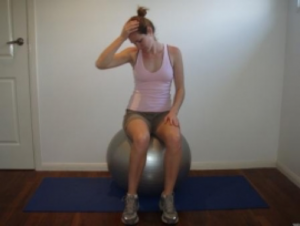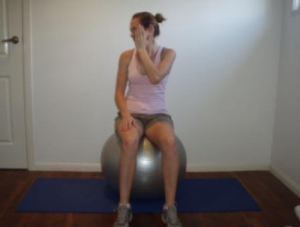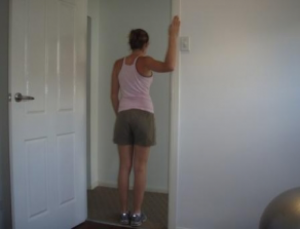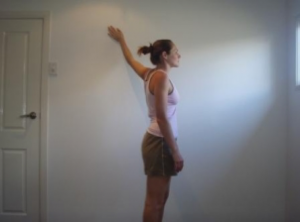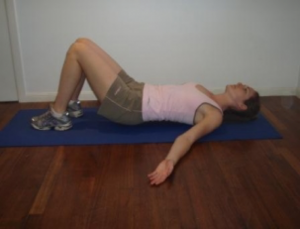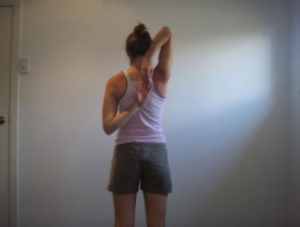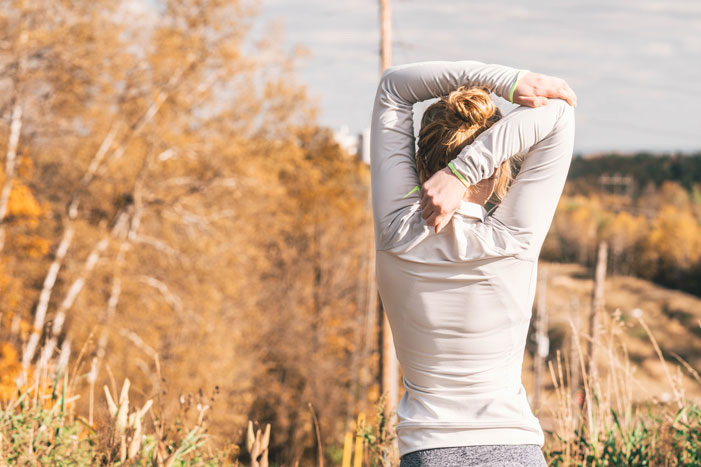
11 Jan Upper body stretches
Always consult your Osteopath or General Physician before attempting an exercise or rehabilitation programme. For more information or to make an appointment please contact (07) 5607 0100 or click here to contact us by email.
Trapezius (Side and back of neck)
Sit comfortably with spine straight,
Bend neck slightly forward,
Then side bend head to one side,
Place hand (the side that you are looking to) over the top of your head and apply a gentle over pressure.
A comfortable stretch should be felt down the side and back of neck.
Hold this position until a change is felt (approximately 40 seconds)
Repeat three times per side two times a day
Cervical Muscles (Side and front of neck)
Sit comfortably with spine straight,
Turn head to the right,
Place your left hand on your left cheek,
Then turn your head to the left but resist the movement with your hand,
Push for 10 seconds then relax,
Then using you left hand, gently turn your head to the right a little further.
A comfortable stretch should be felt down the side and back of neck.
Repeat this technique five times in both directions, two times a day
Pectoralis major (Chest)
Stand in doorway (ensure pelvis not rotated),
Place one forearm on side of doorway,
Lean forward and twist slightly to the opposite direction,
A comfortable stretch should be felt on the front of the chest.
Hold this position until a change is felt (approximately 40 seconds)
Repeat three times per side two times a day
Pectoralis minor (Deep chest)
Stand tall perpendicular to a wall (ensure pelvis not rotated),
Picture a large clock on the wall,
Reach your arm upwards and place against the wall (approximately 10 O’clock),
Keeping your body facing forward
A comfortable stretch should be felt on the front of your shoulder and chest.
Hold this position until a change is felt (approximately 40 seconds)
Repeat three times per side two times a day
Passive Chest
Roll a towel length ways,
Lie flat on the floor with the towel along the length of the spine,
Ensure arms are relaxed with palms facing upwards towards the roof,
Breath deeply into your diaphragm,
You will feel a slight stretch and opening sensation of the upper chest.
Hold this position until a change is felt (approximately five minutes)
Shoulder (Glenohumeral joint)
One elbow up, one elbow down,
Keep you shoulders low,
Stretch your right arm straight up over your head and then bend your elbow so that your palm touches your back between the shoulder blades,
Stretch your left arm straight back behind your body and then bend the elbow, placing your hand in the middle of your back above your waist, palm out,
If possible clasp the two hands together. If the fingers just barely touch or if it impossible for your hands to touch, hold a towel in your right hand and clasp it with your left.
Hold this position until a change is felt (approximately 40 seconds)
Repeat three times per side two times a day
Note:
It is normal to feel slight discomfort and tightness while performing stretches. However, if any stretch causes pain, increased tingling/numbness or more than just slight discomfort, please discontinue the stretch and contact your Osteopath.
Bouncing while stretching may seem like it helps you stretch farther, but it is actually counterproductive and can be injurious.
Bouncing also activates the stretch reflex (this is the reflex your doctor checks by tapping the tendon just below the kneecap, causing your foot to kick). Quickly stretching a muscle tendon (by bouncing) causes the muscle to perceive that it is going to be overstretched. Its response is to contract and shorten its resting length. Therefore bouncing stretches causes you to get tighter and tighter.


